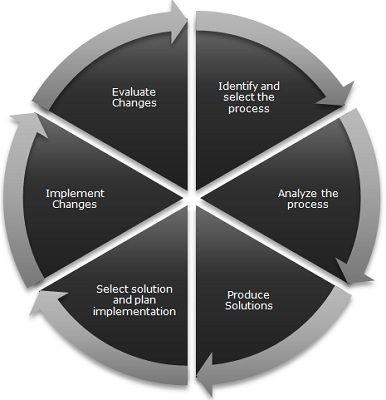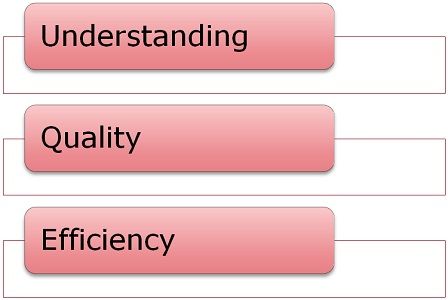Definition: Process Analysis can be understood as the rational breakdown of the production process into different phases, that turns input into output. It refers to the full-fledged analysis of the business process, which incorporates a series of logically linked routine activities, that uses the resources of the organization, to transform an object, with the aim of achieving and maintaining the process excellence.
Process Analysis is nothing but a review of the entire process flow of an organization to arrive at a thorough understanding of the process. Further, it is also helpful to set up targets for the purpose of process improvement, which is possible by eliminating unnecessary activities, reduce wastage and increasing efficiency. Thus, it ultimately ends up improving the overall performance of the business activities.
Objectives of Process analysis
- Identify the factors that make it difficult to understand the process.
- Ascertain completeness of the process.
- Remove bottlenecks
- Find redundancies
- Ascertain the allocation of resources
- Check out process time
Understanding, Quality and Efficiency are the three basic criterion, through which one can analyse the process and determine the areas that require change.
Steps Involved in Process Analysis
- Step 1 – Interview major participants of the process: Discuss the participants about what they do, why they do and how they do it. Identify the information and inputs required by the workers to perform the task assigned to them. Research about the source of input and outputs of each task.
- Step 2 – Carry out group discussion: Group interview and brainstorming session are conducted, with the aim of generating ideas, validating and refining the information collected, at the first step.
- Step 3 – Identify bottlenecks and redundancies: Find out the bottlenecks in each task that causes delay and various measures to remove it. Further, identify the unnecessary activities, whose elimination can ease the process.
- Step 4 – Create Sketch: Make a sketch right from the scratch of the entire process, depending upon the business process requirements, which came into light after interviews and discussions.
- Step 5 – Compare: At the end, compare the latest process flow with the previous one, and mark the areas that require changes, as per the research conducted.
Process Analysis is a methodical approach to enhance the understanding and redesigning of the workflow of the organization. It acts as a tool to maintain and improve the business processes and also help in attaining the incremental to transformational benefits, such as cost reduction, optimum utilisation of resources, effective human resource allocation and process efficiency.



Century says
Thanks very much